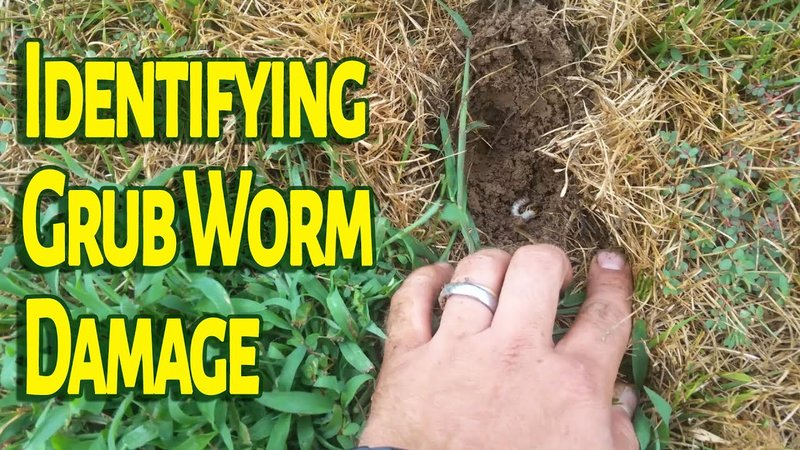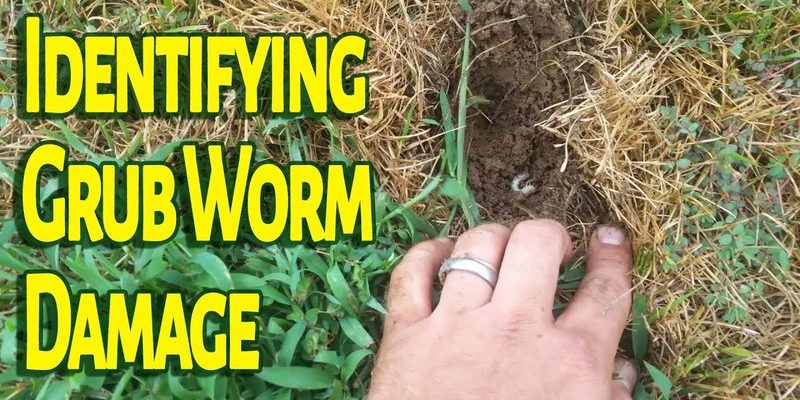
You might be wondering, “How do I spot them before they ruin my lawn?” Great question! Think of your lawn as a delicate ecosystem. Just like a gardener tends to their plants, you need to keep an eye on the signs that grub worms are lurking beneath the surface. Catching them early means you can tackle the problem before it spirals out of control. Let’s dive into the world of grub worms and learn how to spot them before they cause any real damage.
What Are Grub Worms?
Grub worms are the larvae of several types of beetles, like Japanese beetles and June bugs. These little pests start their lives underground, munching on grass roots and other plant material. At first, they might seem harmless, but as they grow, so does their appetite. It’s really important to understand their life cycle since that will help you know when to look for them.
Grubs typically hatch in late spring or early summer, depending on your location. They feed through the summer, only to burrow deep into the soil as the weather cools down. This is where they can do the most damage. A small infestation might not be noticeable right away, but a large population can lead to dead patches and even a lawn that feels spongy underfoot. So knowing how to spot them early is key.
Signs of Grub Worm Activity
Here’s the thing: spotting grub worms early can save you a lot of trouble later. But how do you recognize their signs? One of the first indicators is *grass that’s wilting or turning brown*. If you notice patches of grass that seem to be dying, take a closer look.
Another sign is if your lawn feels *soft or spongy* when you walk on it. This could mean that the roots are being eaten away by grubs, leaving the grass without the support it needs to stay healthy. Also, check for increased presence of animals like raccoons or crows, as they often dig up the lawn to snack on grubs. Keep your eyes peeled—these signs can help you catch a problem before it escalates!
How to Check for Grub Worms
To check for grub worms, you can do a simple test that involves digging a small section of your lawn. Use a spade or a shovel to cut out a square foot of grass and about three to four inches deep. Peel back the sod to see what’s underneath. You’re looking for plump, white larvae that resemble small caterpillars.
If you find more than a few grubs in that area, it’s a sure sign you have an infestation. Remember, the magic number is around 10 grubs per square foot; if you hit that mark, it’s time to take action. The sooner you find them, the easier it will be to keep your lawn healthy and happy.
Timing Matters: When to Look for Grubs
Timing is crucial in the battle against grub worms. The best time to check for them is late summer through early fall. During this period, grubs are actively feeding and close to the surface, making them easier to spot. You might also consider setting a reminder on your phone to check your lawn at these times. This proactive approach could save you both time and money in the long run.
In the spring, grubs begin to pupate and turn into beetles, which means fewer will be munching on your grass. However, by then they’ve likely wreaked some havoc. So, keeping an eye on your lawn during late summer and early fall is key to catching those pesky little pests before they do any major damage.
Preventing Grub Worm Infestations
So you’ve spotted some signs of grub worms, or maybe you just want to stay ahead of the game. Prevention is always better than cure! One effective way to deter grubs is by ensuring that your lawn remains healthy. Regularly aerating your lawn allows better air circulation and helps roots to grow deeper, making your grass more resilient to pests.
*Applying nematodes*, which are beneficial microscopic worms, is another natural prevention method. They attack the grub larvae without harming your grass. Additionally, maintaining a healthy soil through proper watering and fertilizing can help keep your lawn thriving. When your grass is healthy, it’s less likely to fall victim to pests.
What to Do If You Find Grub Worms
If you do find grub worms, don’t panic—it’s not the end of your lawn! There are various treatments available. One option is to apply a chemical pesticide designed for grubs during their active feeding period. However, be cautious with chemical products; always follow the instructions carefully to ensure safety for your lawn and the environment.
Another great alternative is to use organic solutions like *milky spore*, which targets the grub’s life cycle. This method may take longer, but it’s a fantastic way to maintain ecological balance in your garden. Whatever you choose, make sure to keep your lawn well-maintained afterward to prevent future infestations.
Common Misconceptions About Grub Worms
You might have heard some myths floating around about grub worms. One common misconception is that all grubs are harmful. In fact, not all beetle larvae will damage your lawn. Some can actually be beneficial to the ecosystem! It’s important to identify whether the grubs in your yard are species that cause harm or if they can be part of a healthy garden.
Another myth is that lawns are doomed once grubs are found. That’s simply not true! With early detection and proper treatment, you can revitalize your lawn and prevent further damage. So, instead of giving up when you spot a few grubs, take it as a cue to step up your lawn care game.
Keeping your lawn looking its best doesn’t have to feel overwhelming, especially when it comes to dealing with grub worms. By learning how to spot these pesky critters before the damage is done, you’re taking a huge step toward maintaining a healthy lawn. Remember to check for signs, time your inspections wisely, and prioritize prevention.
Your lawn is an important part of your home, so taking the time to care for it will certainly pay off. With the right knowledge and tools in your gardening kit, you can keep your grass lush and green, free from those unwanted guests lurking beneath the soil. Happy gardening!

